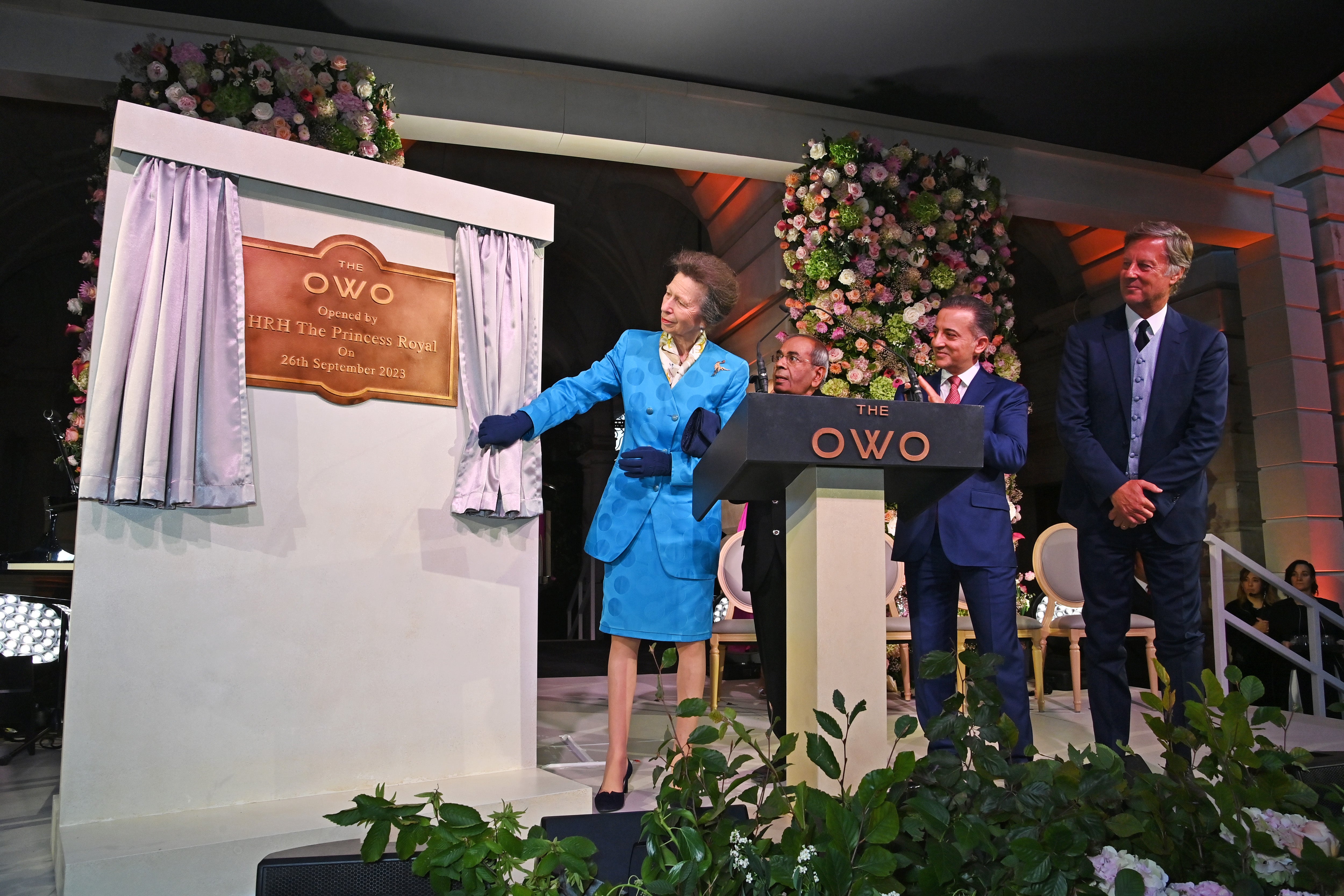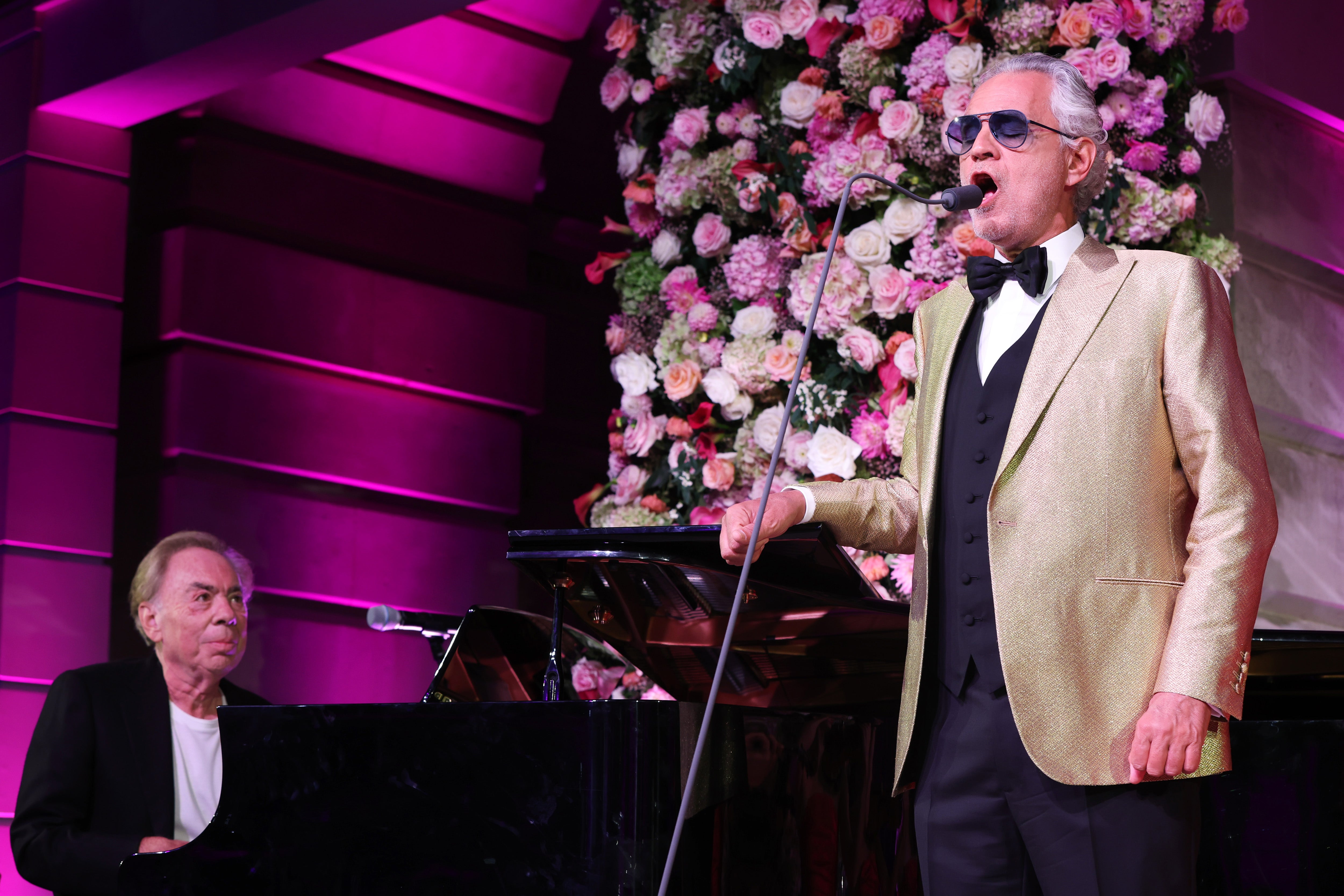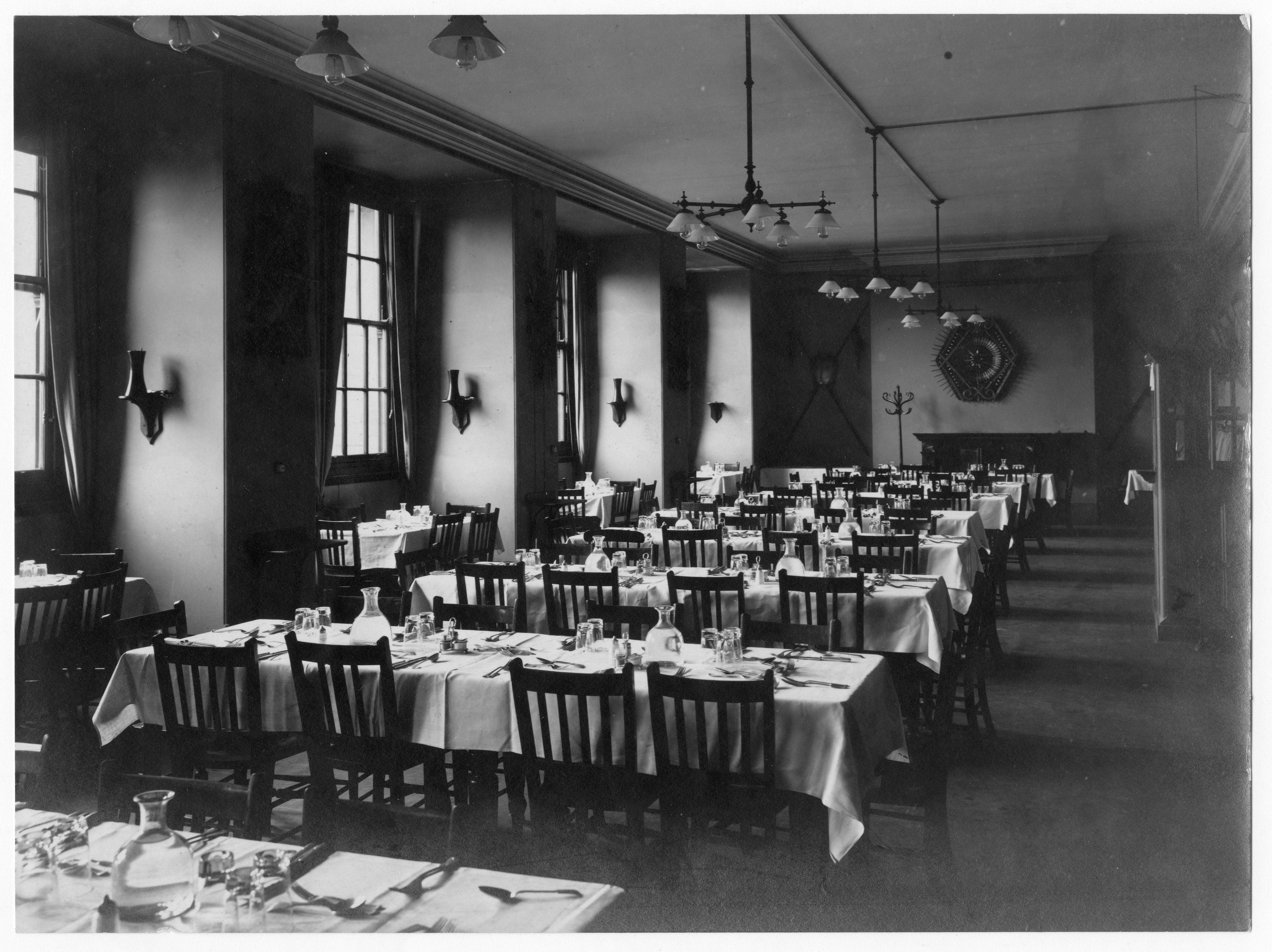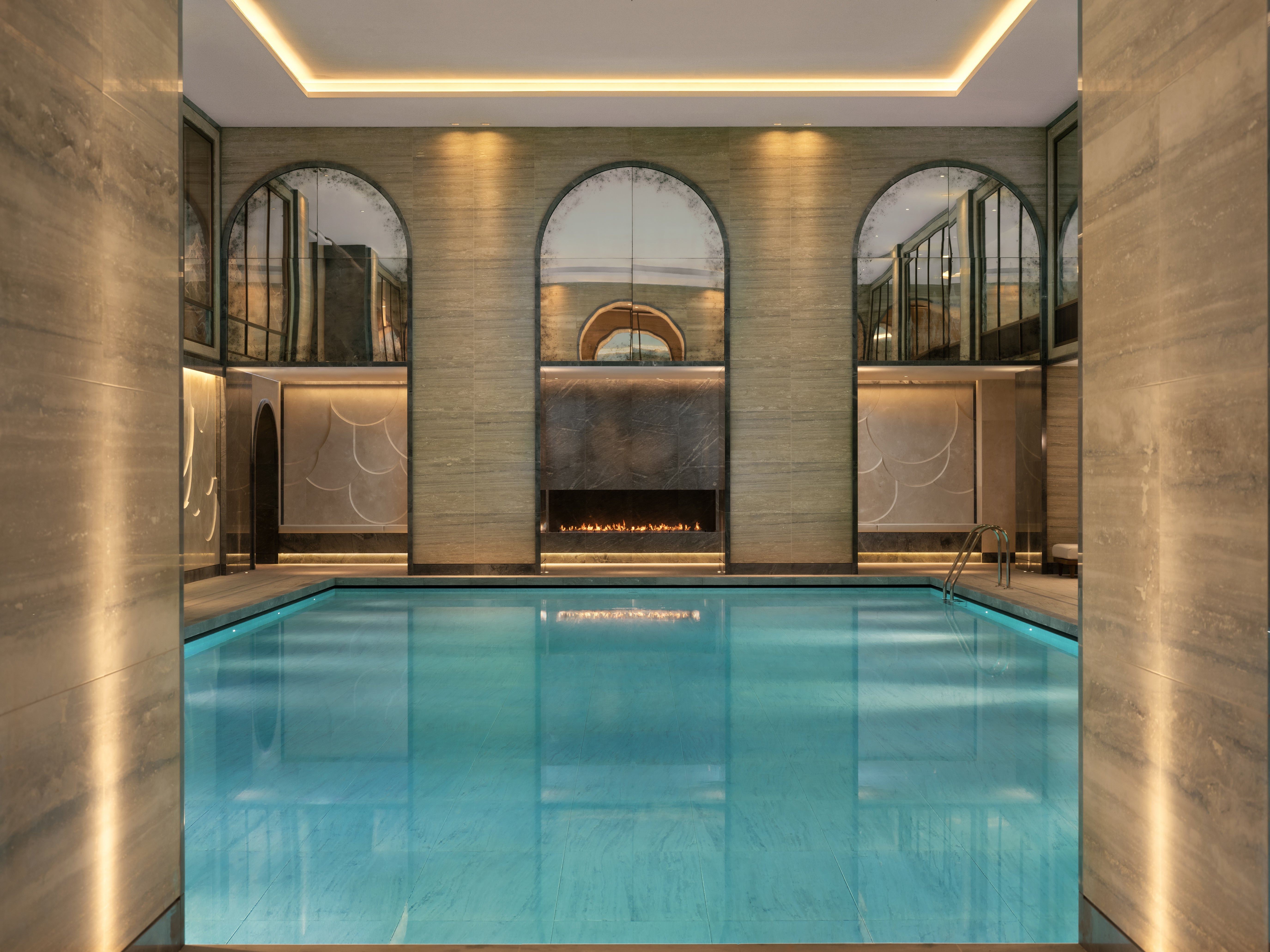How a corner of Whitehall – once the cockpit of the world – became a playground for the super-rich
The great and the not so good, from Churchill to Profumo, have walked its halls. Now the Old War Office has been turned into London’s newest super-luxe ‘billion pound’ hotel, a five-star reminder of just how much real power Westminster and Whitehall have lost, writes Harry Mount

When the Old War Office was bombed on 8 October 1940, the visiting American ambassador to Britain said the only sign of alarm was that the doorman wasn’t wearing his top hat. Today, the building still stands as a symbol of Britain at its mightiest. A uniformed doorman remains, albeit now wearing a different kind of “hat”, part of a welcome party for the opening of what is being dubbed Britain’s newest “billion-pound hotel”.
Tuesday night saw the glamorous launch party of Raffles London at the OWO – after the Hinduja brothers paid £350m to buy the building from the Ministry of Defence on a 250-year lease. Seven years and a billion-pound refit later, the hotel was officially declared open by the Princess Royal, who was joined by her niece Princess Beatrice and an A-list guest list that included Andrew Lloyd Webber and Andrea Bocelli.
When the War Office was built by the Scottish architect William Young and his son Clyde in 1906, the empire was at its height, and Westminster and Whitehall were the cockpit of the world. However, the starry launch this week signals a significant power shift in modern Britain and its place on the global stage today.

Yes, the Old War Office has been polished up to outshine even its Edwardian splendour, but its transformation from a martial powerhouse to a luxury hotel is part of a wider trend that is playing out in so many of our grandest buildings in Whitehall. While our force on the world stage may be diminished, these buildings are offering new homes to much bigger modern gods of commercialisation and hospitality.
This new luxe sector has become a part of Britain where wealthy visitors can now literally buy their way into the history books. The cheapest rooms at the OWO start at £1,000 a night. Those who can afford it can upgrade and own one of the 85 flats in the newly revamped building, which are being sold for up to £100m.

The imperial pride in the renovated building is still evident. The Hindujas have done a superb renovation, meticulously restoring the symbols of British power at its height. The lion and unicorn of the royal arms stand proudly over the main Whitehall entrance.
Hotel guests today will still see the hallowed War Office rooms, and the vast main staircase – which Lawrence of Arabia said was so grand that it was ”only for the use of Field Marshals and charwomen” – is still there in all its splendour.
The revered old buildings that surround it are all in excellent shape: 10 Downing Street, Horse Guards and the Ministry of Defence. But look a little closer, and you can see how many other once-great British institutions have also been transformed into super-luxe hotels. Whitehall, it seems, is finding new life as a soft superpower at the heart of Hospitality Britain.

A Ministry of Defence building next door to the Old War Office is now the Corinthia Hotel (with bedrooms starting at £1,440 a night). Just across the street is the Royal Horseguards Hotel – the old Secret Intelligence Service (later MI6) building which once had its own spies’ entrance to the Old War Office. Then, disguised as a fictional company, Rasen, Falcon & Co, it was here that Mansfield Cummings, chief of the Secret Intelligence Service, worked and later became the inspiration for ‘M’ in Ian Fleming’s James Bond stories.
The starry launch ... signals a significant power shift in modern Britain and its place on the global stage today
A few yards away is Inigo Jones’s sublime Banqueting House, once part of Whitehall Palace. In 1649, Charles I stepped from a first-floor window of the Banqueting House to have his head chopped off in front of a crowd on Whitehall. Before his execution, elaborate masques were held here in the 17th century for the royal family. Today, the Banqueting House is still part of Historic Royal Palaces but is primarily a tourist attraction, available for hire for lavish parties.
As a hotel, the Old War Office is certainly more opulent than it was when run by the Ministry of Defence. The War Office’s scandalous days are well documented, and it was here that John Profumo, secretary of state for war, had his own private lift and set out for trysts with Christine Keeler that led to his downfall.

In 1964, the year after the Profumo Scandal, the War Office was closed and absorbed into the Ministry of Defence. The Hinduja brothers have successfully created a new hotel that rejoices in its splendid, newly cleaned skin. It is the perfect addition to their collection of 85 Raffles hotels across the world, which all borrow their name from the most famous, luxurious, colonial hotel of all - Raffles Hotel in Singapore, opened in 1887 and still flourishing today.
The huge OWO building – 770,000 sq ft, with 26,000 tons of Portland stone, 3,000 tons of York stone, and more than 26 million bricks – reached its peak in the First World War. Up to 2,500 people worked there, so many that hundreds of them had to work in zeppelin huts on the roof, so-called because they were sitting ducks for German bombs.
Today, these “history as entertainment” hotels are now backdrops for a stiff cocktail or a rigorous workout in the new gym. The new hotel may have seven underground floors and seven above ground with 120 bedrooms, nine restaurants, three bars, a swimming pool, spa and ballroom, but it is the ghosts of its past that are still the main attraction.

Stories will be told of how in the Second World War, the writer brothers Peter and Ian Fleming both used the building. As did Ian Fleming’s immortal creation, James Bond, who perches on the roof in Skyfall, gazing across to Westminster Abbey and Parliament. The War Office also appears in A View to a Kill, Licence to Kill and Spectre.
The 1 per centers who will pass through the doors of these grand buildings will be walking in the shadows of the titans who gathered in them at a time when they had purpose other than entertainment and holidays. During the two world wars, the great names of British history stalked the 2.5 miles of the War Office corridors, from Lord Kitchener to the prime ministers HH Asquith and David Lloyd George.

It was after Winston Churchill visited the OWO in June 1940, that he returned to Downing Street to compose his speech: “We shall not flag or fail. We shall go on to the end … we shall defend our island, whatever the cost may be.”
It’s wonderful to see our history being brought to new life, and who can blame the tourists and the super-wealthy for wanting to walk in the footsteps of the colossi who crossed the same threshold in the glory years? But in those quieter moments, you can’t help but feel something is missing. In 1962, Dean Acheson, the former US secretary of state, said Britain had “lost an empire and failed to find a role”.
We have a role now – as emperors of the hospitality and entertainment sector. But as we preserve the great legacy of our most powerful days in aspic, you can’t help but feel our new soft tourist power is just another poignant and nostalgic reminder of much real importance on the world stage we have lost.
Harry Mount is the author of ‘How England Made the English’ (Penguin)






Join our commenting forum
Join thought-provoking conversations, follow other Independent readers and see their replies
Comments